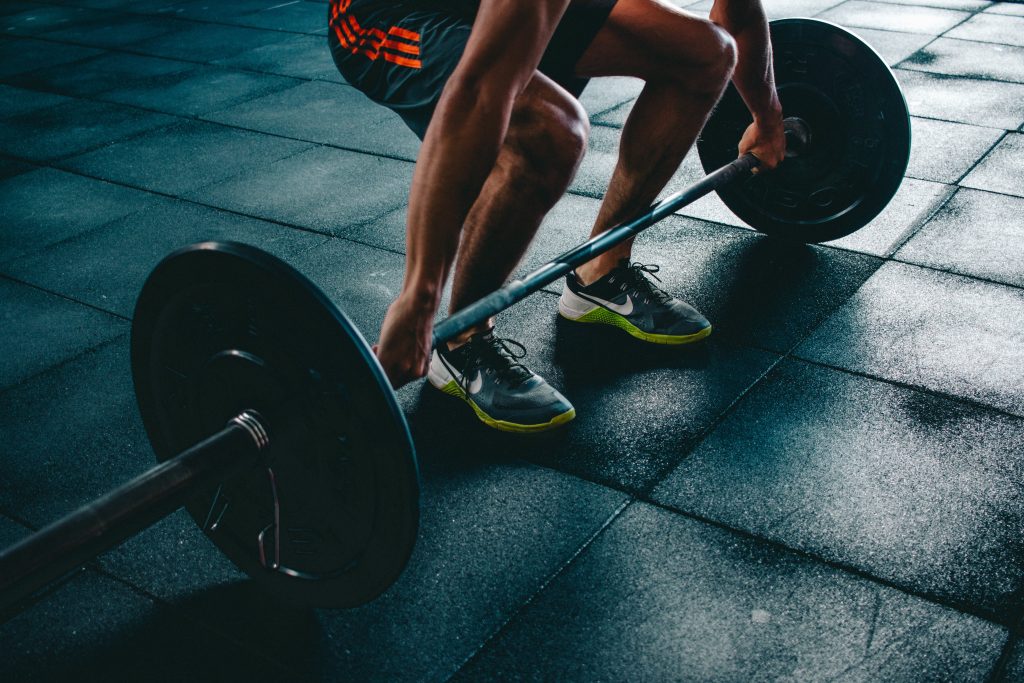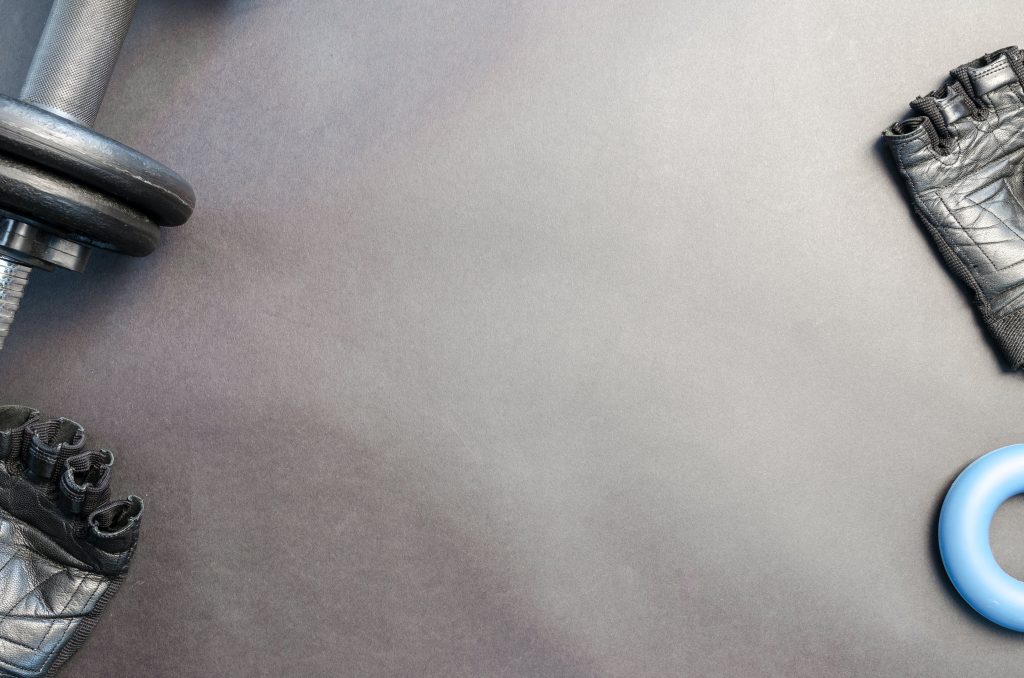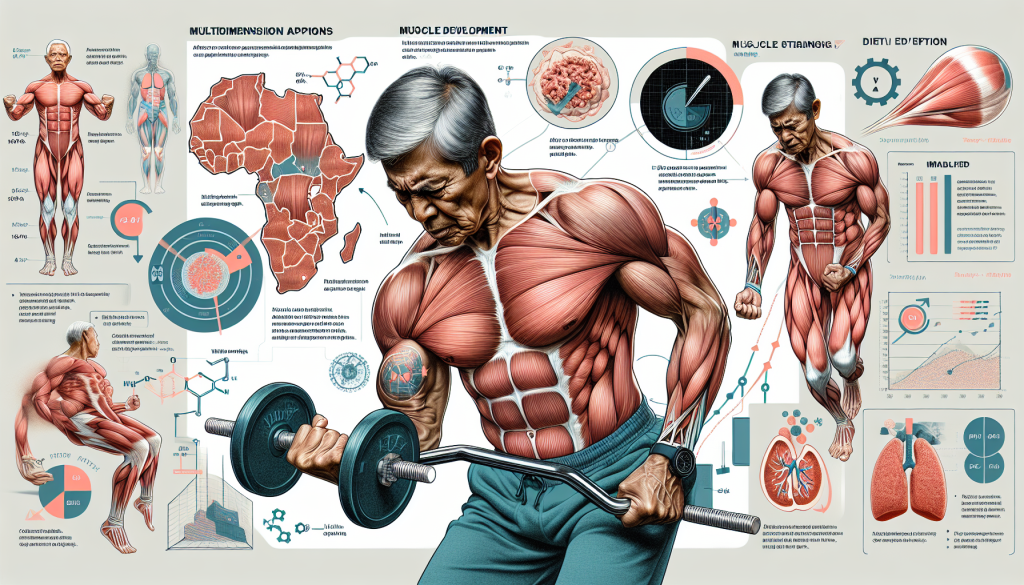So you’re wondering if it’s ever too late to achieve that coveted six-pack abs? It’s a question that many people ask themselves, especially as they get older and start to notice changes in their bodies. But fear not, because in this article, we’re going to explore the possibility of getting a six-pack after a certain age. We’ll address some common questions and misconceptions, and provide you with some valuable insights that may just inspire you to embark on your own fitness journey. So grab a seat, sit back, and let’s get ready to uncover the truth behind those elusive abdominal muscles.
Factors to Consider
Age
When it comes to achieving a six-pack or toning your abdominal muscles, age is a factor that should be taken into consideration. As you age, your body undergoes various changes that can affect the appearance and strength of your abdominal muscles. However, it’s important to remember that it is still possible to work towards a strong core, regardless of your age.
Body Composition
Another factor to consider is your body composition. The amount of muscle mass and body fat you have can play a significant role in the visibility of your abdominal muscles. Building and maintaining lean muscle mass while reducing body fat is key to achieving a well-defined six-pack.
Diet
Your diet plays a major role in both the appearance and strength of your abdominal muscles. Consuming a balanced diet that is rich in nutrients is essential for supporting muscle growth and reducing body fat. It’s important to focus on a caloric deficit, ensuring you consume fewer calories than you burn, while also maintaining a macronutrient balance that includes an adequate intake of protein.
Exercise Routine
Having an effective exercise routine is crucial for developing strong abdominal muscles. Incorporating specific exercises that target your core muscles is important. However, it’s important to remember that spot reduction is not possible, so focusing solely on abdominal exercises will not lead to a six-pack. Instead, a combination of overall body strength training and targeted core exercises is recommended for optimal results.
Consistency
Lastly, consistency is key when it comes to achieving a six-pack or strong core muscles. Consistently following a healthy diet, maintaining an exercise routine, and staying dedicated to your fitness goals will yield the best results. It’s important to stay motivated and committed to the process, even on days when you may not feel as motivated. With consistent effort and dedication, you can work towards achieving a well-defined midsection regardless of your age.
Effects of Aging on Abdominal Muscles
Loss of Muscle Mass
One of the effects of aging on abdominal muscles is a loss of muscle mass. As you age, your body naturally begins to lose muscle mass, including the muscles in your abdominal area. This can result in a reduction of overall muscle definition and a loss of strength in your core.
Increase in Body Fat
Another effect of aging on abdominal muscles is an increase in body fat. As you get older, your metabolism tends to slow down, making it easier to gain weight, especially in the midsection. The accumulation of excess body fat can mask the visibility of your abdominal muscles and make it more challenging to achieve a six-pack.
Decreased Metabolism
Additionally, aging can lead to a decreased metabolism. A slower metabolism can make it harder to burn calories and body fat, which can contribute to the accumulation of excess fat in the abdominal area. It’s important to take proactive measures to boost your metabolism through regular exercise and a healthy diet to counteract these effects.

Age and Abdominal Fat
Visceral Fat Accumulation
As you age, you may notice an increase in visceral fat, which is fat that surrounds your internal organs. This type of fat is particularly harmful to your health and can be a major contributing factor to various health issues such as heart disease and diabetes. Visceral fat accumulation can also make it more difficult to achieve a toned midsection.
Hormonal Changes
Hormonal changes that occur with age can also impact the distribution of fat in the body, including the abdominal area. As hormone levels fluctuate, fat storage patterns may change, resulting in more fat being stored in the midsection. This can make it more challenging to achieve a six-pack, but it is not impossible with the right approach.
Impact of Aging on Fat Distribution
Overall, the aging process can lead to changes in fat distribution, with a tendency for more fat to accumulate in the abdominal area. This can result in a softer midsection and make it more challenging to achieve visible abdominal muscles. However, by incorporating a combination of diet, exercise, and lifestyle changes, you can still work towards achieving a well-defined six-pack.
Importance of Diet
Caloric Deficit
When it comes to achieving a six-pack, diet plays a crucial role. To reduce body fat and uncover your abdominal muscles, you need to create a caloric deficit. This means consuming fewer calories than you burn each day. Whether it’s through portion control, tracking your food intake, or making healthier food choices, creating a consistent caloric deficit is essential for achieving a toned midsection.
Macronutrient Balance
In addition to a caloric deficit, maintaining a proper macronutrient balance is important for supporting muscle growth and reducing body fat. A well-balanced diet should include a combination of carbohydrates, proteins, and fats. While carbohydrates provide energy for your workouts, proteins are crucial for muscle repair and growth. Fats are also important for hormone production and overall health. Ensuring a balanced intake of these macronutrients helps optimize your body composition and promotes a healthier lifestyle.
Importance of Protein
Protein is a particularly important macronutrient when it comes to achieving a six-pack. Protein is the building block of muscle and plays a crucial role in muscle repair and growth. By consuming an adequate amount of protein, you can support the development and maintenance of abdominal muscles. Good sources of protein include lean meats, fish, eggs, dairy products, legumes, and plant-based protein sources such as tofu and tempeh.
Hydration
Proper hydration is often overlooked, but it is crucial for overall health and supports your fitness goals. Drinking an adequate amount of water throughout the day helps regulate bodily functions, aids in digestion, and can contribute to a feeling of fullness, which can help control your overall calorie intake. Staying hydrated is also important for optimal muscle function and recovery during workouts.

Effective Exercises for Abdominal Muscles
Crunches
Crunches are a classic abdominal exercise that targets the rectus abdominis, the muscles responsible for the coveted six-pack appearance. To perform crunches, lie on your back with your knees bent and feet flat on the floor. Place your hands behind your head or crossed on your chest. Lift your upper body off the floor, curling your shoulders towards your pelvis. Focus on contracting your abdominal muscles throughout the movement, and avoid pulling on your neck or using momentum.
Planks
Planks are a highly effective exercise for strengthening the entire core, including the deep stabilization muscles. To perform a plank, start in a push-up position with your hands directly under your shoulders and your body in a straight line from head to heels. Engage your core and keep your back flat. Hold this position for as long as you can, aiming to increase your time with each workout. You can also modify the plank by lowering down onto your forearms or performing side planks to target different areas of your core.
Russian Twists
Russian twists are a great exercise for targeting the obliques, which are the muscles at the sides of your waist. To perform Russian twists, sit on the ground with your knees bent and feet flat on the floor. Lean back slightly, engaging your core. Extend your arms straight out in front of you, and twist your torso to one side, bringing your hands towards the floor beside your hip. Return to the starting position and twist to the other side. Repeat this movement, alternating sides.
Hanging Leg Raises
Hanging leg raises are a challenging exercise that targets both the lower abs and hip flexors. To perform hanging leg raises, find a sturdy pull-up bar or apparatus to hang from. Hang with your arms fully extended and your feet off the ground. From this starting position, engage your core and lift your legs up towards your chest, maintaining control throughout the movement. Lower your legs back down to the starting position and repeat.
Strength Training for Core Muscles
Weighted Exercises
Incorporating weighted exercises into your workout routine can help develop a stronger core. Exercises such as weighted sit-ups, cable or machine crunches, and weighted torso rotations can provide additional resistance and challenge your abdominal muscles. However, it’s important to start with lighter weights and gradually increase the load to ensure proper form and prevent injury.
Resistance Training
In addition to targeted abdominal exercises, incorporating compound movements into your strength training routine can also help strengthen your core. Exercises such as squats, deadlifts, and overhead presses engage the core muscles as stabilizers, providing a more comprehensive workout for your entire midsection. These compound movements not only strengthen your core but also contribute to overall muscle growth and fat loss.

Cardiovascular Exercise and Fat Loss
High-Intensity Interval Training (HIIT)
High-intensity interval training, or HIIT, is a popular cardio workout that can be effective for reducing body fat and revealing your abdominal muscles. HIIT involves short bursts of intense exercise followed by periods of active rest or low-intensity exercise. This type of training not only burns calories during the workout but also increases your metabolism, leading to continued calorie burning after the workout. Incorporating HIIT workouts into your routine can help accelerate fat loss and improve overall cardiovascular fitness.
Steady-State Cardio
Steady-state cardio, such as jogging, cycling, or swimming at a moderate intensity, is another effective option for burning calories and reducing body fat. While it may not be as intense as HIIT, steady-state cardio can still contribute to fat loss when performed consistently and for longer durations. This type of cardiovascular exercise can help create a calorie deficit and contribute to overall weight loss, including the loss of abdominal fat.
Impact on Body Fat Percentage
Both HIIT and steady-state cardio can contribute to a reduction in body fat percentage, which is essential for achieving a six-pack. By combining regular cardiovascular exercise with a healthy diet and overall strength training program, you can work towards decreasing your body fat percentage and increasing the visibility of your abdominal muscles. It’s important to find a balance of cardio exercises that you enjoy and can consistently incorporate into your fitness routine.
Importance of Consistency
Long-Term Commitment
Developing a six-pack or achieving strong core muscles requires a long-term commitment to your fitness goals. Consistency is key when it comes to seeing progress and maintaining the results you desire. This means sticking to a regular exercise routine, consistently following a healthy diet, and staying motivated even when you may not see immediate results. Remember, the journey to a six-pack is a marathon, not a sprint.
Progressive Overload
Consistency also involves progressive overload, which refers to gradually increasing the demands placed on your muscles over time. Whether it’s increasing the weight lifted during strength training exercises or adding new exercises to challenge your core, progressive overload ensures that your muscles continue to adapt and grow stronger. Be patient and focus on small, incremental improvements to achieve long-lasting results.
Rest and Recovery
While consistency is important, it’s equally important to prioritize rest and recovery. Your body needs time to repair and rebuild muscle tissue after intense workouts. Overtraining and neglecting rest days can lead to muscle fatigue, decreased strength, and an increased risk of injury. Incorporate rest days into your weekly routine, listen to your body, and allow for adequate sleep to support optimal muscle growth and overall health.

Adapting to Individual Factors
Workout Modifications
It’s important to adapt your workouts to your individual factors, such as age and fitness level. If you are starting or returning to exercise after a long hiatus, it’s recommended to begin with shorter workouts and lower intensity exercises. As you progress, gradually increase the duration and intensity of your workouts while incorporating exercises that target your abdominal muscles. Pay attention to how your body responds to different movements and adjust accordingly.
Adjusting Intensity
As you age, it’s important to listen to your body and adjust the intensity of your workouts accordingly. You may find that certain exercises or movements are more challenging, and that’s okay. Modify exercises as needed to ensure proper form and reduce the risk of injury. Focus on quality over quantity, and don’t be discouraged if progress is slower than anticipated. Stay committed, be consistent, and your efforts will pay off in the long run.
Consulting with a Professional
If you have specific concerns or questions about developing a six-pack or improving your core strength, it’s always a good idea to consult with a fitness professional or certified personal trainer. They can provide guidance tailored to your individual needs and help you design an exercise program that takes into account your age, fitness level, and any existing health conditions. A professional can also ensure that you are performing exercises correctly and help you progress safely towards your goals.
Mindset and Motivation
Setting Realistic Goals
Developing a positive mindset and setting realistic goals is essential for long-term success. Understand that achieving a six-pack takes time and consistent effort. Set specific, measurable goals that are achievable within a reasonable timeframe. Remember that progress may be gradual and setbacks may occur, but maintaining a positive mindset and celebrating small victories along the way will keep you motivated to continue working towards your ultimate goal.
Tracking Progress
Tracking your progress is an effective way to stay motivated and monitor your journey towards a six-pack. Keep a journal or use a fitness tracking app to record your workouts, measurements, and any changes in body composition. Take progress photos regularly to visually see the changes in your physique. By tracking your progress, you can evaluate what is working for you and make adjustments as needed to stay on track.
Celebrating Small Wins
Remember to celebrate your achievements along the way, no matter how small they may seem. Each milestone reached, whether it’s completing a challenging workout, increasing the weight lifted, or noticing improved definition in your abdominal muscles, is worth acknowledging. Celebrating these small wins will keep you motivated and reinforce your commitment to achieving a six-pack. Embrace the journey and enjoy the process of transforming your body and improving your overall health.
In conclusion, achieving a six-pack or strong core muscles is possible at any age. While aging may present unique challenges, such as a decrease in muscle mass and an increase in body fat, with the right approach and consistency, you can work towards achieving a toned midsection. Factors such as age, body composition, diet, exercise routine, and consistency all play a role in developing visible abdominal muscles. By focusing on a balanced diet, incorporating effective abdominal exercises, including strength training and cardiovascular exercise, and maintaining a positive mindset, you can work towards your goal of a six-pack and enjoy the numerous benefits of a strong core. Remember, it’s never too late to start or resume your fitness journey, and with dedication, you can achieve a well-defined midsection that you can be proud of. So, take the first step, stay committed, and enjoy the process of sculpting your abdominal muscles.





